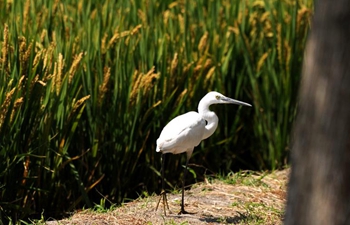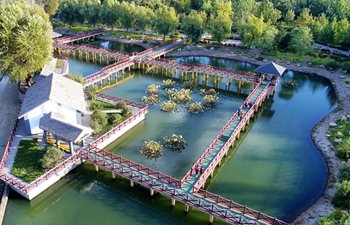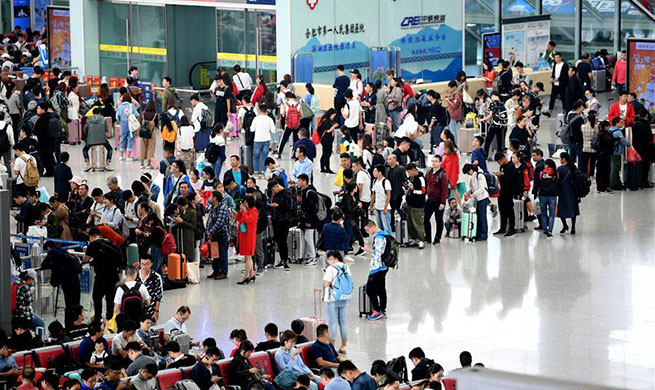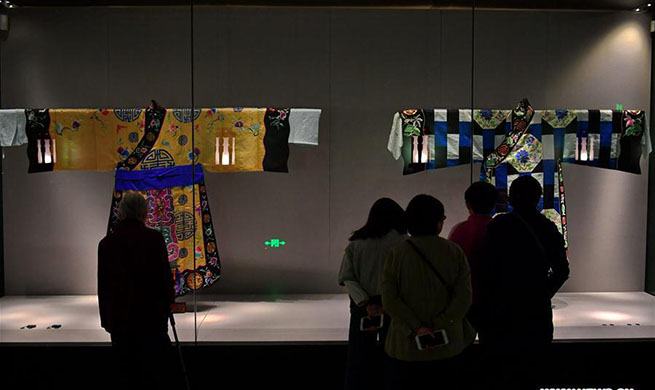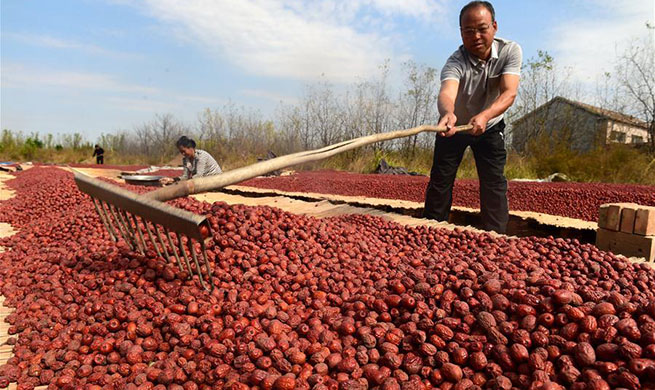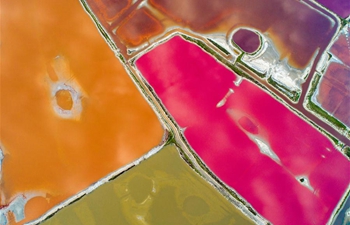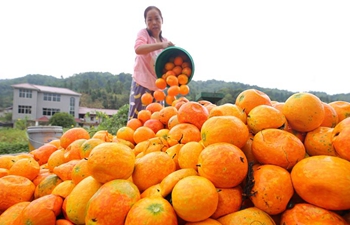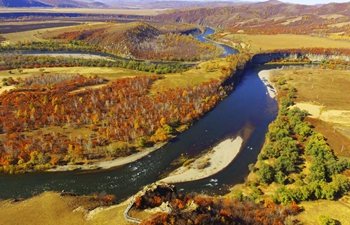NANCHANG, Oct. 7 (Xinhua) -- In Xie Zhenhui's simple home studio, a plastic oil bottle serves as a pen wash, while a rickety table functions as a drawing board.
Xie puts the final touches on a painting with a Chinese shepherd boy alongside a buffalo carrying rice paddies, pumpkins and watermelons.
"I am painting my idea of a bumper harvest in rural China," said Xie, 56, a farmer in Jiaoyuan Village in east China's Jiangxi Province.
China celebrated its first-ever national harvest festival across the country last month. Xie said he created the painting in commemoration of the festival.
Xie has been learning painting from his father, a decorator, since the late 1970s. He said among all the things he painted over the past decades, his major focus was food.
"The more I desired something, the more I painted it," he says.
Xie has seven brothers and sisters, and in the early days when materials were lacking, food was never sufficient to support the big family.
"My mother would always sell the sweet potatoes and vegetables she grew in our field to trade for more sweet potato residue to feed us because the food she grew was simply not enough to feed so many family members," Xie recalls. "At that time, if I could eat a complete sweet potato, I would feel so lucky."
Xie says he vividly remembers his mother toiling in the field day and night, and he poured all his desires for a bumper harvest into his paintings.
"This is a painting I created more than 30 years ago in commemoration of my hardworking mother and all those hard years," Xie says, as he displays a painting of a woman holding a baby, with needles, thread and a dustpan placed in front of her, surrounded by chickens and ducks.
The picture is called Mother, and it was exhibited at a provincial art show for its simplicity and exquisiteness.
China has seen rapid progress in industrialization and urbanization since the country began its reform and opening-up 40 years ago, becoming the second-largest economy in the world.
With only 7 percent of the world's arable land, China manages to feed 20 percent of the planet's people, thanks to hard-working Chinese farmers like Xie's mother.
"I remember in 1982, authorities in the village began contracting production output quotas to households, and our lives started to turn for the better," Xie says of the rural reform which started in the late 1970s.
"We began to have enough food, and I even got married two years later," he says. "We repaid our debts and accumulated enough money for the wedding banquet."
The wedding was held after a bumper harvest in the autumn, and Xie says many guests spoke highly of the quota system.
Lives continued to improve in rural China after the reform, and in the 1990s, many farmers left the countryside to seek better-paying jobs in China's more developed coastal areas. Many farmer painters like Xie jumped on the migrant worker bandwagon. But Xie chose to stay and stick with his painting hobby while continuing to work in the fields. During this period, the content of his paintings also took a new direction.
"I painted domestic appliances, or even cars, which were not yet frequently seen in rural areas," Xie says. He also painted modern-dressing girls.
Xie has also been invited to paint walls in neighboring villages. In 2013, Xie was invited to Yangjialing Village to help record the bumper harvests through paintings on the walls.
"Yangjialing is in the same county as my village," Xie says. "The local villagers were relocated there due to a water facility project in the 1970s, and life was really hard in the barren place at first."
After more than 40 years of development, the mountains there have seen fruit gardens spring up. Every harvest season, buses filled with tourists show up to buy fruits.
"Harvests have come a long way and are not easy, and we want you to paint the history of our lives here," local villagers told Xie. Xie helped paint pictures of the older generation carrying quilts and their babies to Yangjialing, and how they managed to survive and thrive there.
Farmers are enjoying a better life today thanks to the government efforts in giving priorities to the development of agriculture and rural areas.
The Ministry of Agriculture and Rural Affairs forecasts steady output. China is expected to embrace its 15th consecutive bumper harvest this year.
These days, Xie's paintings have not only made it onto village walls but also have been included in art exhibitions in metropolises like Beijing and Shanghai.
"No matter how times change, harvests will always be the main theme of my paintings," Xie says.








